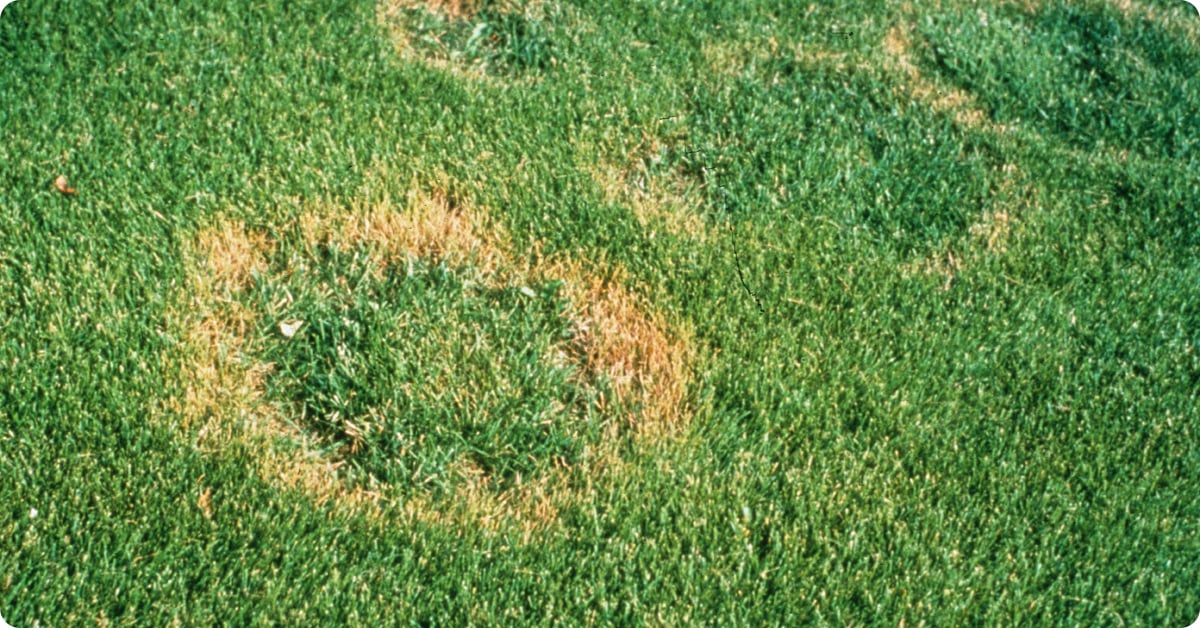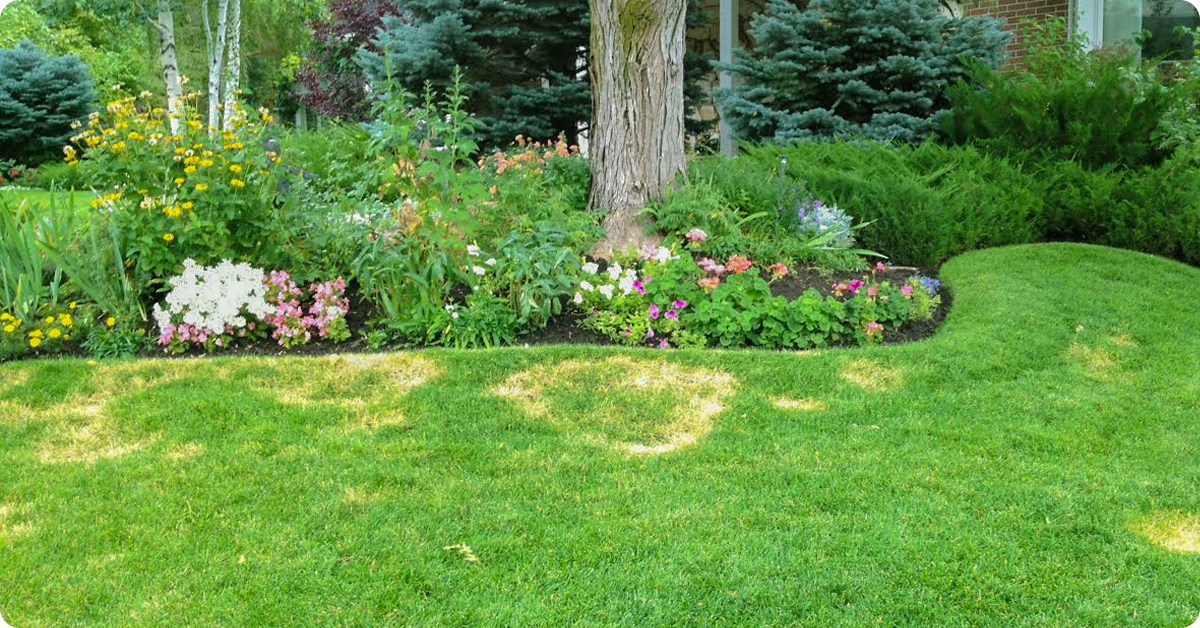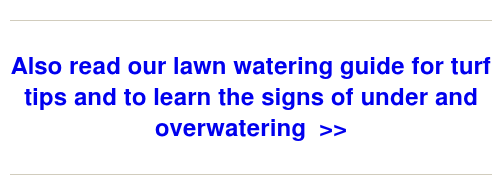
Mr. and Mrs. Jones started noticing the brown rings in their green grass a couple of years ago. Now the problem was only getting worse. The circle-shaped spots not only dotted their lawn, but they also started to appear in other neighborhood yards.
The Jones hired several lawn care services to treat their property, but there was no improvement. Finally, a family friend and employee at the local IFA Country Store examined their yard and diagnosed the problem as Necrotic Ring Spot (NRS).
NRS is becoming more common in northern Utah, especially with certain types of grass. Once the fungal disease infects your lawn, it’s difficult to remove.
But once you recognize the symptoms, there are a variety of methods and treatments you can apply to combat NRS. With time, watchful care and healthy cultural practices, you can remove the rings and return your yard to its former beauty.
What is Necrotic Ring Spot?
Ophiosphaerella Korrae, more commonly known as Necrotic Ring Spot, is an aggressive, devastating, hard-to-control lawn fungus that colonizes roots, crowns and rhizomes of many common grass varieties. In Utah, it’s more common in Kentucky and Bluegrass, but it’s capable of colonizing others, including Fescues.
You’ll find this fungus attacks grass in irregular round shapes and spreads over time. The fungus grows below the surface in the soil of the root zone where it kills the roots and crowns. The spores transfer by soil and turf contact from one part of the yard to another.

Symptoms of Necrotic Ring Spot
A lawn with the NRS fungus will have brown spots with the texture of healthy grass. It’s not dry and brittle. The ideal conditions for NRS include cool and moist conditions, between 55 and 83 degrees Fahrenheit, although symptoms may more readily be apparent in summer heat or drought conditions.
Frequently, the turf will survive the infection and re-grow in the center of the patches, giving them a ring-like “frog eye” appearance. In the spring, rings may appear as just a light green color. Other symptoms may include depressions in the soil where rings are present, easily-pulled roots or Hyphae in the roots, which makes the plant more prone to environmental factors.
Some signs of NRS fungus
-
- Brown spots that feel like healthy grass
- Ring-shaped brown spots which may appear light-green in spring
- Ring-shaped depressions in the soil
- The grass is easy to pull up
- Fungal hyphae visible on roots
You might consider contacting a Utah State University Extension Agent or IFA Country Store specialist to help diagnose the problem.
How do I treat NRS in my lawn?
When found to be infected with NRS, people have attempted to dig up and replace their lawns. The truth is it’s an expensive venture and it doesn’t guarantee complete removal.
Humates
Start by improving the health of your soil. It’s the best long-term solution, but it will take time. Soil health is most easily improved with humates and organic matter that can be spread like fertilizer, penetrating into the soil.
Aerate
Annual aerating will help increase the air supply to the roots, improve water penetration, fertilizer penetration, and help prevent thatch and compaction.
Sulfur
Sulfur amendments can reduce the severity of NRS by acidifying the soil, roots and inhibits. A higher application rate will give you better control, although be sure to thoroughly water the product into the soil to avoid leaf damage to your lawn.
Non-fungicide treatment
For the best results, we recommend LawnSaver, a soil enhancement product that not only controls the fungus, but also promotes new growth. Ring to Green is an environmentally friendly, non-fungicide solution for NRS and other lawn fungi.
Fungicide treatment
We also recommend these fungicides as an option to treat NRS and help your lawn stay healthy:
-
- Headway G Fungicide
- Bonide Infuse Fungicide
- Fertilome F-Stop
Can I completely rid my lawn of Necrotic Ring Spot?
Unfortunately, treatment for NRS is not once and done. It’s a continuous, watchful, year-after-year process. However, improving soil health and lawn care practices does help significantly.
Rotate treatment products
LawnSaver and fungicide applications will generally be most effective if you make multiple applications and vary the product you use. Focus on spring and fall when the fungus is active. Fungicides that control NRS include Myclobutanil, Fenarimol, Propiconazole and Thiophanate methyl. Remember to lightly water the fungicide into the turf.
Water lightly and mow carefully
Good cultural practices like mowing and watering will make a difference in dealing with NRS. Water the affected areas lightly and regularly — the opposite of what you would normally do. The height setting on your lawnmower should be set between 2.5 and 3.5 inches.
Soil amendments
You’ll want to apply soil amendments like humates and organic matter. Humates will increase the carbon ratio in the soil. Use a balanced blend of N, P & K (Nitrogen, Phosphorus & Potassium). Don’t make it too “hot,” use slow-release nitrogen sources and avoid applications that will cause rapid top growth.
Choose NRS-resistant plants
Consider using grass and plant types that are resistant to NRS. No turfgrass variety is completely resistant to NRS, but Perennial Rye Turf Grass shows the most resistance.
Use a totally clean aerator
When aerating, do it with a clean machine. The aerator teeth need to be 100 percent clean before and after use as fungus spores transfer easily from lawn to lawn with aerators and mowers. We recommend spraying the coring teeth with one part rubbing alcohol to 10 parts water to sterilize your aerator after cleaning.
Let Us Help
Healthy, vigorous turf is always the best prevention of disease, insect and weed problems. Just grab any IFA team member the next time you’re walking down the fertilizer aisle at your local IFA Country Store and we’ll be happy to help in any way we can.
Information for this article was provided by Doug Howell, Region Manager, IFA Country Store; Lorenzo Lopez, Professional Turf Manager, IFA; Kent Mickelsen, Utah Certified Nurseryman, IFA Country Store; and Ken Holt, Lawn & Garden Category Manager, IFA Country Store.
Images were provided by LawnSaver.












